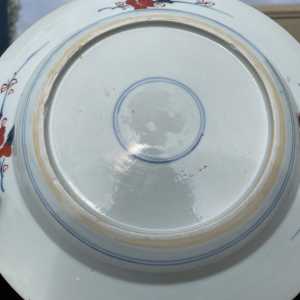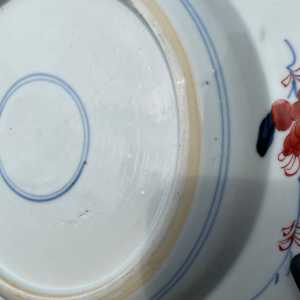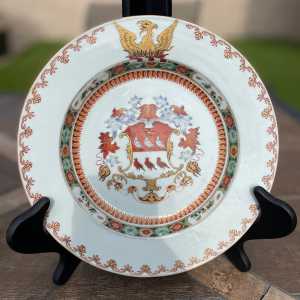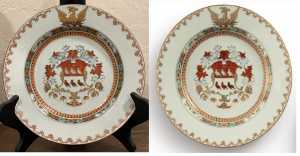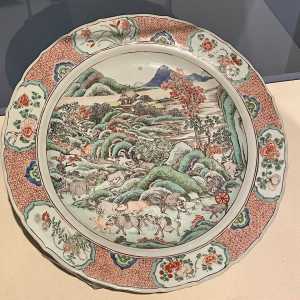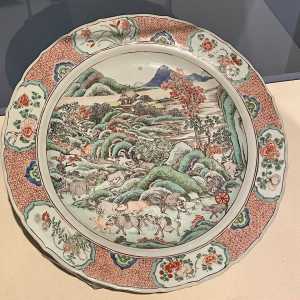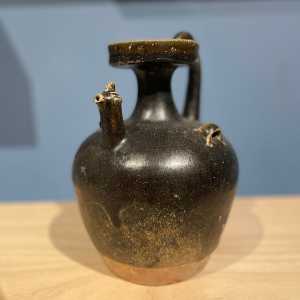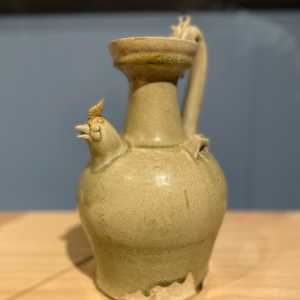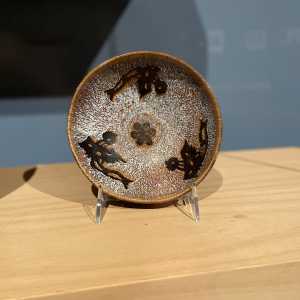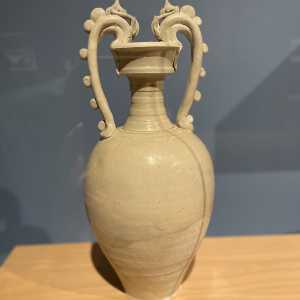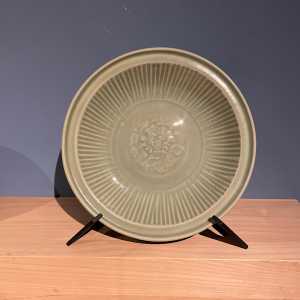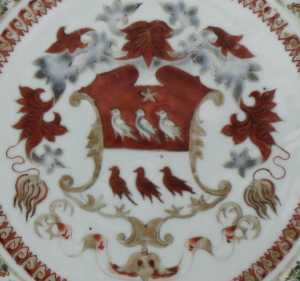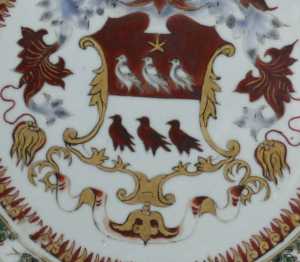The Chinese and Asian Art Forum. For Fans, Collectors and Dealers.
 Basic Rules For the BidAmount Asian Art Forum: Talk about whatever you want. You can even discuss and offer things that are for sale if they are authentic. Maximum image file size per post is 2 MB. Images of 700pxl x 700pxl are optimal if saved at a medium resolution. Be respectful of others and enjoy yourself. Click the YouTube link for a brief tutorial on using the forum. You can also EMBED Videos by cutting and pasting from You-Tube, Vimeo etc.
Basic Rules For the BidAmount Asian Art Forum: Talk about whatever you want. You can even discuss and offer things that are for sale if they are authentic. Maximum image file size per post is 2 MB. Images of 700pxl x 700pxl are optimal if saved at a medium resolution. Be respectful of others and enjoy yourself. Click the YouTube link for a brief tutorial on using the forum. You can also EMBED Videos by cutting and pasting from You-Tube, Vimeo etc.
NOTE: To post an item or add a new post, click open the category title from the FORUM LIST, and CLICK the Blue ADD TOPIC button.
@goodwillhunter I agree with John...very strange to see the double empty circles on the bottom of an export armorial plate. Once again, my ears are ringing that this may yet be another example of a genuinely old plate that has been redecorated.
Very interesting point. The pastes as Vic has indicated does look correct but the gilding of the Phoenix looks really messy and thick. Is this a repaint for a broken service?
I think it looks 18th c. I am simply not entirely sure when in the 18th c, a couple of things still make me think it could be later but then, I have been playing around with Qianlong plates today so maybe my mind is stuck up towards that end.
I am certain it isn't what the auction house said. It is a nice plate, enjoy it!
Hi Christian, I’m no expert on armorial decoration but on your new pictures the back of the plate looks good to me. A typical 1720 rim decoration and the middle has that „dry“ look one would expect. Kangxi to Qianlong glaze should feel a bit oily to the touch, maybe you can compare it with other authentic pieces.
Birgit
So I put Christian's plate side by side with the one sold by Sotheby's.... let's take a look...
The general design and spacing is spot on.
Here's my concern... perhaps just lighting, but enamel elements in Christian's plate seem to dominate over the gold gilt, while it is reverse in the Sotheby's plate.
Take the floral scroll around the outer rim - In Christian's plate, the red creates a dramatic contrast with the gold. In the Sotheby's plate, the red lines are finer, and the gold is the dominant color.
Now, look at central panel design - In Christian's plate, the black lines are well defined throughout. In the Sotheby's plate, the lines are overall less noticable, and in many cases not existant.
The same situation exists with the line work on the eagle - In Christian's plate, the black lines are well defined, but the wings for some reason seem to lack detail of the feathers. In the Sotheby's example the lines are almost silver/gray in color, the gold a shade or two lighter, yet all the details are very well displayed.
Could this be a matter of lighting? Could this be a variation of the hand of a different artist? I suppose both could be true, but there is definately a distinct difference in the appearance of each plate as a whole.
In the field of art forgery, these are the very type of concerns that keep art collectors up at night.
I would like to see some 18th c. examples of export ware with the hollow double circle and the 3 wucai floral sprays.
There was a time when I would have said...'an export forgery? Never!' But given what the prices of these rare export pieces go for these days.... I think we need to excercise extreme caution.
I still as thinking 20th century but the back foot looks period it seems different variations of this same design have been produced.
@greeno107 Unless someone can find another plate from this service with a back like this one, to me this has to either be a later replacement piece or an outright fake. The floral sprays on the back are poorly spaced. I have a high quality Yongzheng armorial - there are four floral sprays evenly spaced on the back. I also think the foot looks odd, with the oatmeal color seeming to go in and out weirdly - it looks contrived to me.
Thank you all for the great information you provided. I hope Sotheby’s can solve the mystery.
Speaking of different lighting, pictures, cameras etc. I recently took a picture of a Kangxi charger and compared it with a photo on Christie’s website. It is amazing how much the colors differ due to lighting, camera and bad photographer😂 Thought that was quite interesting.
@goodwillhunter That's a beautiful charger! Digital cameras take measurements of light and color from multiple points, and then the computer makes a decision based upon pre-programed settings if the photo needs adjusting, and then makes the adjustment.
Looking at your farm/village scene charger photo, it looks like the camera felt the colors were too intense, and reduced the saturation. So, compared to the example you cited with Sotheby's, the color looks washed out.
I played around with the photo you took on my phone. When I increased saturation, the colors line up very well with the Sotheby's example. It appears that your plate does not have much of the dark emerald green enamel that the Sotheby's example has in the tree's leaves.... you only have one man with a bright green shirt driving cattle (about 8 O'clock on the center panel).
More importantly, the line work of your farm/village scene charger is quite spectacular... very complex. The lines do not dominate over the colors and overall design.... they go from thick, to thin, to non-existant throughout each particular design element (border, foral panels, center scene).
I tried a similar test with your armorial plate. It required that I reduce the saturation, increase tint (green/blue), decrease warm (red/yellow), and the match up was better, but not as good as I got with the farm/village charger.
There's nothing scientific about what I was doing, so I'm not going to post the photo results hence they be used to discredit your plates. Your plates are both quite beautiful, and I feel strongly that the only genuine authentication should be done while physically handling them.
That said, all the tweeking I did regardng color and light never resolved the differences in the line work. If collectors of armorials are okay with the 'heavy hand' explination, then you should do well with it.
@greeno107 I greatly appreciate your time and effort. I hope I can update you soon on the status of the plate.
Unfortunately, the Kangxi charger is not mine. It’s currently on display at the Phoenix Art museum. They have a great Asian Art exhibition. Here are a few more pictures. I hope you enjoy. Thank you again!
Best,
Christian
@goodwillhunter I'm curious, where did they date that last bowl with the interior ribs? Is that a Song piece?
@johnshoe I believe it was Yuan but please don’t quote me on this. I’ll find out.
So I have been following this thread because you armorial plate has a lot of similarities to a pair of plates that John G. posted here a while ago, which I currently have in my possession. For about a month and a half I have been looking into them, mostly trying to track down info on the provenance at the MFA.
I am of the opinion that the armorial decorations were possibly painted in Europe on late Kangxi blanks that shipped over as ballasts, or lesser wares. the enamel and gilding is not very Chinese, but the bodies themselves are certainly of the period. The red flowers on the reverse are very much in line with a pair of Bont bowls that I have, stylistically and in terms of shade of red.
As far as double rings on the back of armorials, it seems plausible, just depending upon the exact period, I can't say exactly what yours is, but I wonder if the heavy handedness of the decoration is due to being European.
Here is a link to his post. I will try and photograph my bont bowls as a comparison later today.
Jeremy
@julia Did you notice the difference of the black outline in the center motif on the Guest and Gray dishes? It seems there is quite the difference between the two dishes. One looks more similar to my dish while the other one resembles that of Sotheby’s.
Thanks for visiting "The BidAmount Asian Art Forum | Chinese Art"
If you sell on eBay, or have a shop feel free to post images and descriptions and links.
Check back often for discussion about the latest news in the Chinese art and antique world. Also find out about the latest Asian art auctions at Sotheby's, Christie's, Bonhams and Tajans.
Auction results for: fine porcelain, ceramics, bronze, jade, textiles and scholar's objects. As well as Japanese, Thai, Vietnamese and other Asian cultures.
Thank you,
Peter Combs
Topics and categories on The BidAmount Asian Art Forum | Chinese Art
Kangxi vases, Kangxi dishes and chargers, Kangxi ritual pieces, Kangxi scholar's objects, Qianlong famille rose, Qianlong enamels, Qianlong period paintings, Qianlong Emporer's court, Fine porcelain of the Yongzheng period. Chinese imperial art, Ming porcelain including Jiajing, Wanli, Xuande, Chenghua as well as Ming jades and bronzes.
The BidAmount Asian Art Forum | Chinese Art
A free Asian art discussion board and Asian art message board for dealers and collectors of art and antiques from China, Japan, Korea, Thailand, Cambodia, Vietnam and the rest of Asia. Linked to all of the BidAmount Asian art reference areas, with videos from plcombs Asian Art and Bidamount on YouTube. Sign up also for the weekly BidAmount newsletter and catalogs of active eBay listing of Chinese porcelain, bronze, jades, robes, and paintings.
The art of calligraphy - and for the ancient Chinese it certainly was an art - aimed to demonstrate superior control and skill using brush and ink. Calligraphy established itself as one of the major Chinese art forms during the Han dynasty (206 BCE - 220 CE), and for two millennia after, all educated men were expected to be proficient at it.
The Museum’s collections of Asian art span nearly five millennia and encompass the cultures of China, the Himalayas, India, Japan, Korea, and Southeast Asia. In 2007, the Museum launched an initiative to create dedicated galleries for the collection, beginning with a gallery for the arts of Korea ...
Chinese art is full of symbolism, in that artists typically seek to depict some aspect of a totality of which they are intuitively aware.
China Online Museum is the finest online museum of Chinese art. It features Chinese calligraphy, painting, ceramics, bronzes, carving, and other artworks.
Chinese Ceramics & Works of Art. Overview Upcoming auctions Contacts Auction results ... Christie’s sales of Chinese ceramics and works of art showcase centuries of Chinese history. Held throughout the year in London, New York, Paris and Hong Kong, they attract a wide audience of collectors and connoisseurs vying for pieces as diverse as ...
Explore Asian Art Week. Contact the Specialist Department. Chinese Paintings ... Senior Specialist, Head of Sale. [email protected]. Tel:+1 212 641 5760. Bid in-person or online for the upcoming auction:Fine Chinese Paintings on 10 September 2019 at New York. Bid in-person or online for the upcoming auction:Fine Chinese Paintings on 10 ...
Discover an abundance of must-see art from all corners of a vast continent at Christie’s NY Asian Art Week. From contemporary classical and Chinese paintings to works with exemplary provenance from the Art Institute of Chicago, our Rockefeller Paza galleries will be full of ancient treasures and contemporary masterworks in a salute to the vibrant arts of Asia.
Sold to benefit The Art Institute of Chicago’s Asian Art Acquisition Fund, the sale features 84 lots with a focus on Ming and Qing porcelains, and offers a rare insight into the taste for collecting Chinese ceramics and works of art in the Midwest from the end of the 19th century through the 1980s. Highlights include two Wanli wucai garlic-head vases, a Qianlong mark and period, blue and ...
Specialist, Chinese Paintings, Christie's London Dr Malcolm McNeill is a Specialist in Chinese Paintings at Christie’s, based in London. He previously worked as an assistant curator of the Chinese collections and the Victoria and Albert Museum in London, as a researcher at the British Museum, and as a translator and tour guide at the National Palace Museum in Taipei.
The Christie's Education 2020 Conference: The Chinese Art Market 18 Jun 2019 Christie’s Education is delighted to announce our first international academic conference in Asia which will take place in Hong Kong from 26-27 November 2020 at the Hong Kong Convention and Exhibition Centre and will run in parallel with Christie’s Hong Kong Autumn Auctions.
The summer Chinese Art sale in Hong Kong will feature works of art from several private collections, including Qing porcelains and textile from the collection of the legendary Chinese art dealer A. W. Bahr (1877–1959), fine gilt bronze Buddhist sculptures from an old Hong Kong collection, an East Asian collection of Qing dynasty wine cups and jades, and a Japanese collection of Song ceramics ...
Sotheby's Chinese Works of Art Department holds two auctions each year in London, New York, Hong Kong and Paris.
Chinese Art - View Auction details, bid, buy and collect the various artworks at Sothebys Art Auction House.
With more than 340 Chinese works of art dating from the Neolithic to the Republic periods, highlights of this sale include a selection of Qing Imperial monochromes from the collection of Arnold and Blema Steinberg, early ceramics from the Art Institute of Chicago and Chinese porcelain and works of art from the collection of Henry Arnhold.
Results: Sotheby's Asia Week achieved $52.4 million in six strong auctions, exceeding pre-sale estimates. With 76.5% of lots sold and 60.3% of lots surpassing high estimates, the Asian art sales at Sotheby's indicate continued collector interest in the finest works of art from China, India and and the Himalayas.
Today's sale of Important Chinese Art will proceed as planned with sessions at 10 AM and 2 PM EDT. Sotheby's will be monitoring the weather conditions throughout the day and will be available to coordinate alternative bidding options should conditions make it difficult for clients to attend the auction in person.
Bonhams Chinese Art department is renowned for offering the finest works of art representing the richness and breadth of China's artistic heritage, particularly Imperial porcelain, white and spinach green jades, cloisonné and Buddhist art. Specialised international auctions are held globally, including London, Hong Kong and San Francisco.
Bonhams : Chinese Works of Art We use cookies to remember choices you make on functionality and personal features to enhance your experience to our site. By continuing to use our site you consent to the use of cookies. Please refer to our privacy and cookie policies for more information.
Bonhams Fine Art Auctioneers & Valuers: auctioneers of art, pictures, collectables and motor cars. We use cookies to remember choices you make on functionality and personal features to enhance your experience to our site. By continuing to use our site you consent to the use of cookies. ... Chinese Art (US) General enquiries
Bonhams : Fine Chinese Art We use cookies to remember choices you make on functionality and personal features to enhance your experience to our site. By continuing to use our site you consent to the use of cookies. Please refer to our privacy and cookie policies for more information.
Bonhams Fine Art Auctioneers & Valuers: auctioneers of art, pictures, collectables and motor cars Bonhams : Asian Art We use cookies to remember choices you make on functionality and personal features to enhance your experience to our site.
Bonhams are international auctioneers of fine Chinese and Japanese art. We specialise in rare Imperial and Export Chinese ceramics and works of art, as well as Japanese ceramics, fine and decorative works of art from the Neolithic Period to the 20th century. View on map
Bonhams Fine Art Auctioneers & Valuers: auctioneers of art, pictures, collectables and motor cars. We use cookies to remember choices you make on functionality and personal features to enhance your experience to our site. By continuing to use our site you consent to the use of cookies. ... Asian Art Bonhams. Work. 22 Queen St.
